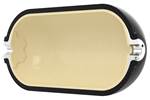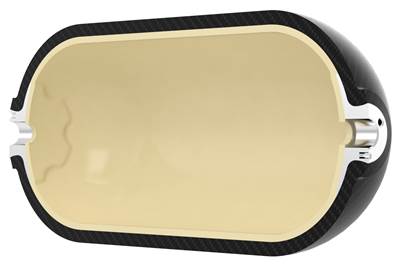NCC launches U.K. initiative to industrialize continuous carbon fiber reclamation
The NCC begins a three-year program to rapidly refine and scale industry continuous carbon fiber recycling, a key solution to net-zero ambitions. Partner collaborations are welcomed to the effort.
On Sept. 7, the National Composites Centre (NCC, Bristol, U.K.) launched an initiative to industrialize continuous carbon fiber reclamation in the U.K. The three-year innovation program will see a team of composites specialists refine and scale the industrial processes needed to establish a commercial market for reclaimed continuous carbon fiber. With global demand for virgin fiber set to exceed supply by 2025, the NCC believes this could ease pressure on supply chains and see the U.K. take a leading role in defining a new era for composites.
While chopped carbon fiber is already recycled, industrial applications for the material tend to be narrow. Working with B&M Longworth (Edgworth, U.K.) and Cygnet Texkimp (Northwich, Cheshire, U.K.), the NCC successfully trialed and tested processes to reclaim and reuse “continuous” lengths of carbon fiber that retain a higher material performance in May 2022. It is hoped that this will accelerate the creation of three different grades of carbon fiber — “A, B and C” — to support a wider range of applications and reduce the volume of continuous carbon fiber-reinforced polymer (CFRP) material sent to landfills in the U.K. by 50% by 2026.
With lightweight, strong and design-friendly carbon fiber being a key component in everything from aircraft and electric vehicles (EVs), to hydrogen storage tanks and the next generation of super-sized turbine blades, global demand for the material is set to outstrip supply — growing from nearly 100,000 metric tons to around 300,000 metric tons by 2030, the NCC reports. This shortage will have an impact on many sectors striving to achieve net-zero goals.
One of these is the sporting goods market (see “Athletic shoe developed with repurposed thermoplastic waste” and “Flexible carbon fiber plates enable high-performance footwear” for examples). Recycled carbon fiber could help makers of trainers, fishing rods, tennis racquets and bicycles substantially reduce the levels of “embodied carbon” in their products — the amount of primary energy used, or carbon released, from the direct and indirect processes associated with manufacturing.
The team has developed a challenging route map to industrialization, with the first sprint project expected to finalize in November 2022.
The average running shoe currently has a carbon footprint of approximately 13.6 kilograms carbon dioxide emissions (CO2e), and manufacturing cars creates between 6,000 and 35,000 kilograms of CO2e per vehicle from basic to high-spec options. Through trials, the NCC has calculated that using reclaimed carbon fiber reduces material manufacturing emissions from around 29.5 kilograms CO2e per kilogram to 5 kilograms CO2e.
The development of a “second-life” supply chain may also help businesses remain profitable, the NCC says: With supplies of the highest quality virgin fiber likely to be claimed by aerospace and defense, sporting goods firms will need an alternative material to turn to.
“The U.K. leads the world in the industrialization of carbon fiber manufacturing but has struggled to develop the sector,” Enrique Garcia, chief technology officer (CTO) at the NCC, says. “We exported much of our expertise— and even our manufacturing infrastructure — to Japan, which was subsequently able to capitalize on a huge growth in U.S. defense spending in the 1980s and, later, a boom in consumer demand for high-end carbon fiber products. We now have a unique opportunity to drive forward a new market by industrializing the processes required to recycle carbon fiber — it is imperative that we push hard now to establish this capability in the U.K.”
According to Garcia, the NCC is looking to rapidly scale up this collaboration and seek partners who would be interested in accelerating product demonstrators using reclaimed continuous fiber in order to reduce their manufacturing carbon footprint.
The team has developed a challenging route map to industrialization, with the first sprint project expected to finalize in November 2022.
To find out how reclaimed continuous carbon fiber can benefit your business, the NCC suggests emailing lowcarbon@nccuk.com to book a free consultation.
Related Content
McLaren celebrates 10 years of the McLaren P1 hybrid hypercar
Lightweight carbon fiber construction, Formula 1-inspired aerodynamics and high-performance hybrid powertrain technologies hallmark this hybrid vehicle, serve as a springboard for new race cars.
Read MorePEEK vs. PEKK vs. PAEK and continuous compression molding
Suppliers of thermoplastics and carbon fiber chime in regarding PEEK vs. PEKK, and now PAEK, as well as in-situ consolidation — the supply chain for thermoplastic tape composites continues to evolve.
Read MoreNatural fiber composites: Growing to fit sustainability needs
Led by global and industry-wide sustainability goals, commercial interest in flax and hemp fiber-reinforced composites grows into higher-performance, higher-volume applications.
Read MoreCryo-compressed hydrogen, the best solution for storage and refueling stations?
Cryomotive’s CRYOGAS solution claims the highest storage density, lowest refueling cost and widest operating range without H2 losses while using one-fifth the carbon fiber required in compressed gas tanks.
Read MoreRead Next
NCC digital design trial speeds up composite pressure vessel proof of concept
Application of multi-disciplinary optimization (MDO) techniques determines optimal composite hydrogen pressure vessel design five times faster, says the NCC.
Read MoreDeveloping bonded composite repair for ships, offshore units
Bureau Veritas and industry partners issue guidelines and pave the way for certification via StrengthBond Offshore project.
Read More“Structured air” TPS safeguards composite structures
Powered by an 85% air/15% pure polyimide aerogel, Blueshift’s novel material system protects structures during transient thermal events from -200°C to beyond 2400°C for rockets, battery boxes and more.
Read More

























